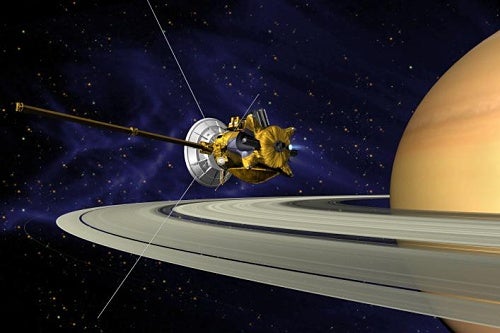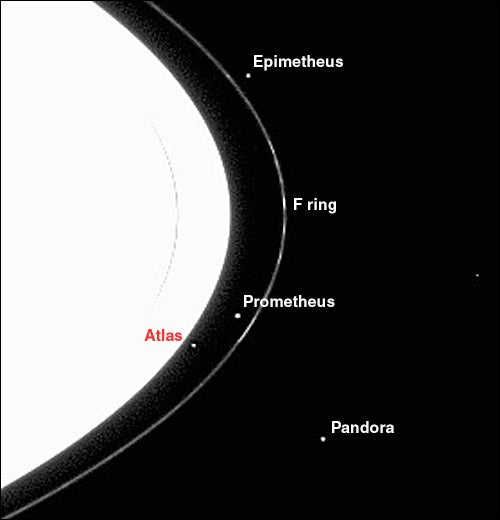July 1, 2004, 12:10 a.m. CDT
The Cassini-Huygens spacecraft, 6.7 years out from Earth, slowly braked into orbit around the ringed planet Saturn this evening. Cassini used a 96-minute-long engine burn that began at 7:36 PDT and ended at 9:12 PDT. At 9:03 PDT, shortly before the engine shut down, Cassini made its closest approach to Saturn for the entire mission: 12,400 miles (19,980 kilometers).
The Cassini-Huygens spacecraft, 6.7 years out from Earth, slowly braked into orbit around the ringed planet Saturn this evening. Cassini used a 96-minute-long engine burn that began at 7:36 PDT and ended at 9:12 PDT. At 9:03 PDT, shortly before the engine shut down, Cassini made its closest approach to Saturn for the entire mission: 12,400 miles (19,980 kilometers).
The long engine burn erased only 1,400 miles an hour (0.6 km per second) from Cassini’s velocity of 67,000 miles per hour (30 km per second) relative to Saturn. That was enough, however, to let Saturn capture the spacecraft, making it a new satellite, the 32nd known moon for the Ringed Planet. Over the next four years, Cassini will make 76 orbits of Saturn, during which it will perform 52 flybys of saturnian moons.
A day earlier, on June 29th, Cassini imaged the small moon Atlas, unseen since it was discovered by the Voyager 1 probe as it flew past Saturn in 1980. Orbiting just outside the A ring, Atlas is only about 20 miles (32 km) across and circles Saturn once every 14.4 hours at a distance of 85,500 miles (138,000 km), or 2.282 Saturn radii.
All during Cassini’s braking, the magnetometer took measurements of the planet’s magnetic field. At the same time (although not during the actual engine firing), the spacecraft took images of the ring system, sunlit from below. These will be sent back to Earth and released later on July 1.











